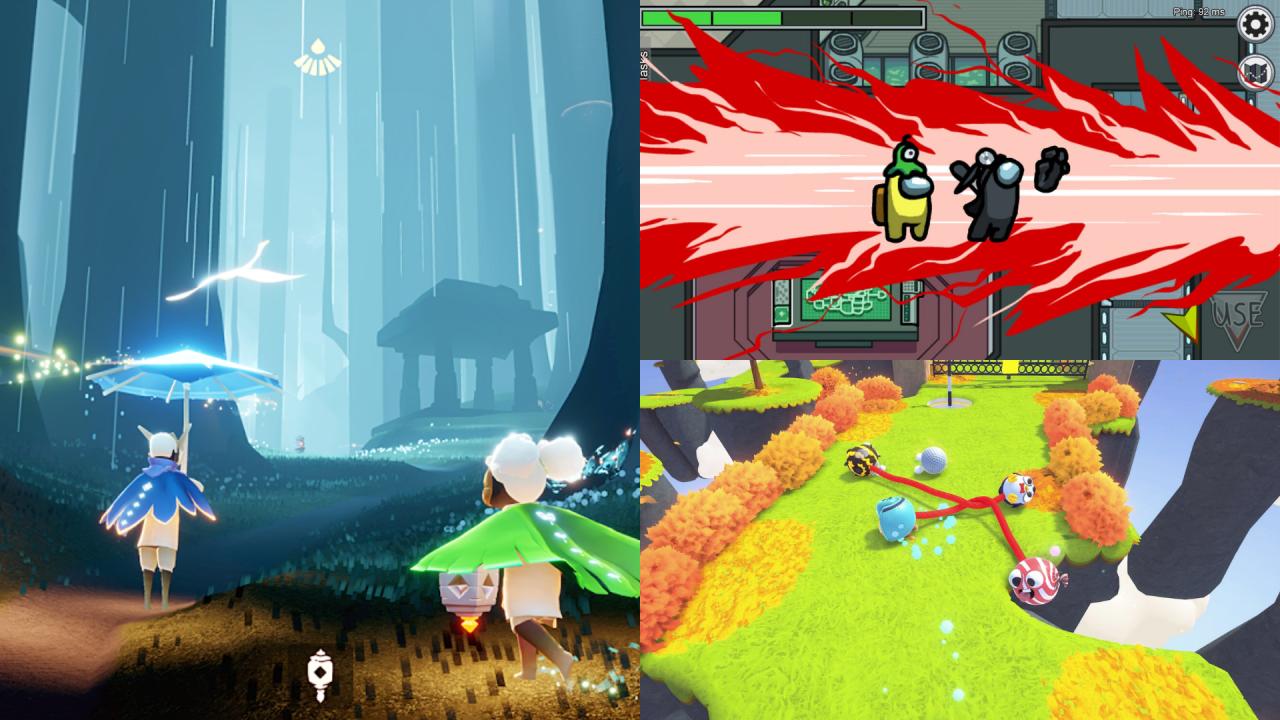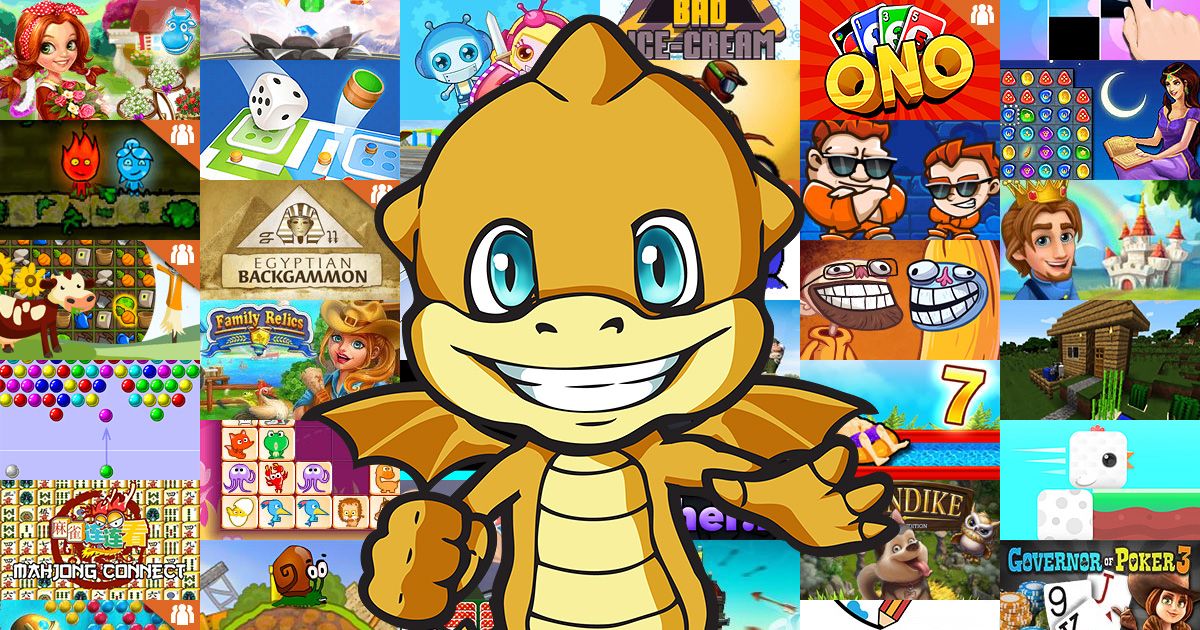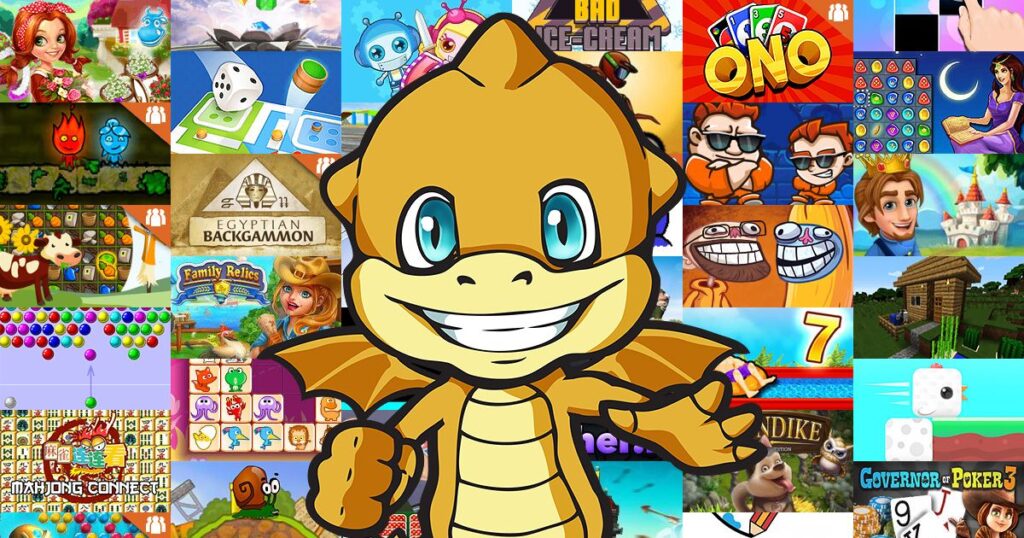Free games have taken the gaming world by storm, offering players a delightful range of options without the need to spend a dime. From action-packed adventures to brain-teasing puzzles, these games cater to all tastes and interests. With a plethora of platforms available, including mobile devices and PCs, the accessibility of free games has never been better.
Furthermore, the latest trends in free gaming reveal exciting innovations that enhance gameplay and player engagement. As developers continually seek to refine their offerings, understanding the various genres and where to find these free games is essential for both casual players and dedicated gamers alike.
Popular Types of Free Games

The world of free gaming is vast and diverse, offering players a variety of genres and platforms to explore. From action-packed adventures to strategic puzzles, free games have something for everyone. This discussion will delve into the different genres of free games, the platforms where they thrive, and the latest trends shaping the free gaming landscape.
Genres of Free Games
Free games are available in numerous genres, each catering to different tastes and preferences. Understanding these genres enhances the gaming experience by allowing players to choose games that resonate with their interests. The following list highlights the most popular genres of free games:
- Action Games: These games are all about fast-paced gameplay that demands quick reflexes. Examples include popular titles like Fortnite, which blends shooting with building mechanics, and Apex Legends, a free-to-play battle royale game.
- Role-Playing Games (RPGs): Free RPGs, such as Genshin Impact, offer expansive worlds for players to explore, develop characters, and engage in rich narratives without any upfront costs.
- Puzzle Games: Games like Candy Crush Saga and Tetris are engaging and often addictive, providing entertainment while challenging the player’s problem-solving skills.
- Simulation Games: Titles like The Sims FreePlay let players create and manage virtual lives, offering a mix of strategy and creativity.
- Sports Games: Free sports games, such as FIFA Mobile, allow players to engage in competitive sports experiences on their devices.
Platforms for Free Games
Free games can be found across various platforms, making them accessible to a broad audience. The following platforms are particularly popular for hosting free gaming experiences:
- PC: Websites like Steam and Epic Games Store frequently offer free-to-play titles and limited-time promotions, making PC gaming highly appealing.
- Mobile: Both iOS and Android app stores feature a plethora of free games, catering to casual gamers who prefer gaming on the go.
- Consoles: Platforms such as PlayStation and Xbox provide free-to-play options along with free games through monthly subscriptions, appealing to console gamers.
- Web Browsers: Many browser-based games are available for free, allowing players to engage in gaming without downloads. Examples include Agar.io and Slither.io.
Latest Trends and Innovations in Free Gaming
The free gaming landscape is continually evolving, driven by technological advancements and changing player preferences. Staying updated on these trends is crucial for gamers and developers alike. Some noteworthy trends include:
- Cross-Platform Play: Many free games now allow players to compete and cooperate across different platforms, enhancing accessibility and community engagement. Fortnite and Call of Duty: Warzone are prime examples.
- In-Game Monetization: Free games are increasingly utilizing microtransactions and battle passes to generate revenue while keeping the base game free. This model has been successfully implemented in games like League of Legends.
- Cloud Gaming: Services like Google Stadia and NVIDIA GeForce Now are changing how players access free games, allowing them to stream high-quality games without needing powerful hardware.
- Augmented and Virtual Reality: Free games that incorporate AR and VR are beginning to emerge, offering immersive experiences that were once limited to premium titles.
“The future of free gaming lies in innovation and player engagement, ensuring that games remain accessible, enjoyable, and financially sustainable.”
Monetization Strategies in Free Games

The landscape of free games is not only defined by their accessibility but also by the diverse monetization strategies they employ. These methods of generating revenue allow developers to maintain and update games while providing players with a free-to-play experience. Understanding these strategies gives insight into how games balance profitability with user satisfaction.
In the realm of free games, two predominant monetization methods stand out: in-game purchases and advertisements. In-game purchases enable players to buy virtual goods, enhancements, or premium content to enhance their gameplay experience. Advertisements, on the other hand, generate revenue through partnerships with advertisers who wish to showcase their products to the gaming audience. Both strategies can significantly impact a game’s success and its community’s dynamics.
Comparison of Monetization Strategies, Free games
To illustrate the effectiveness of different monetization strategies in popular free games, a comparison table has been created. This table Artikels the key monetization methods, their application in notable games, and their perceived effectiveness based on player feedback and revenue generated.
| Monetization Strategy | Example Game | Effectiveness |
|---|---|---|
| In-Game Purchases | Fortnite | High – Generates significant revenue through skins and battle passes. |
| Advertisements | Candy Crush Saga | Moderate – Revenue from ads while allowing players to progress. |
| Freemium Model | Clash of Clans | High – Provides a free experience with optional purchases for faster progression. |
| Subscription Model | Apple Arcade | High – Monthly fee for access to a library of games, enhancing player retention. |
| Sponsored Content | Among Us | Moderate – Collaborations with brands for in-game events. |
The impact of these monetization strategies on player experience is multifaceted. While in-game purchases can enrich gameplay and offer customization, they may also lead to a pay-to-win perception, where players feel pressured to spend money to compete effectively. Advertisements can interrupt gameplay flow, leading to frustration among players who prefer a seamless gaming experience.
“Players value experiences that are engaging and fair; thus, developers must carefully balance monetization with user satisfaction.”
Developers often face the challenge of ensuring that monetization does not detract from the core gaming experience. When executed thoughtfully, these strategies can foster a thriving community while sustaining the game’s financial health. The key lies in making monetization feel optional rather than obligatory, allowing players to enjoy a rich gaming experience regardless of their spending choices.
Community and Social Aspects of Free Games

Free games have revolutionized the gaming landscape by not only offering entertainment at no cost but also fostering vibrant online communities. These communities create spaces for players to connect, share experiences, and collaborate, significantly enhancing the gaming experience. Social interactions within these games contribute to their popularity, as they encourage players to engage and invest in the virtual worlds they inhabit.
Many free games feature built-in social elements that promote interaction among players. For instance, multiplayer games like “Fortnite” and “Among Us” facilitate teamwork and strategy discussions, allowing friends and strangers alike to bond over shared gameplay experiences. Additionally, games like “League of Legends” and “Dota 2” have established robust communities where players can form teams, share tips, and participate in tournaments, enhancing the game’s longevity and appeal.
Player Feedback in Game Development
Player feedback plays a crucial role in shaping the development of free games. Developers often rely on community input to identify bugs, improve gameplay mechanics, and introduce new features. This collaborative approach not only helps in fine-tuning the game but also fosters a sense of ownership among players, making them feel like active participants in the evolution of the game.
Regular updates and patches often stem from community suggestions. For example, the mobile game “Brawl Stars” frequently incorporates player feedback into its updates, ensuring the game remains fresh and engaging. Developers actively monitor forums and social media platforms to gauge player sentiment and adapt their strategies accordingly.
Popular Forums and Platforms for Discussion
Various forums and platforms serve as hubs for players to discuss free games, share strategies, and build communities. These platforms are essential for fostering connectivity and knowledge exchange among gamers.
Here are some notable spaces where discussions thrive:
- Reddit: Subreddits like r/gaming and specific game-related subreddits offer extensive discussions and insights.
- Discord: Many games have dedicated Discord servers where players can chat in real-time, share tips, and organize gaming sessions.
- Steam Community: The Steam platform provides forums for each game, enabling players to share feedback, guides, and discuss updates.
- GameFAQs: This site features forums for players to ask questions and share strategies for various free games.
- Facebook Groups: Numerous groups focus on specific games or genres, offering a space for players to connect and share experiences.


